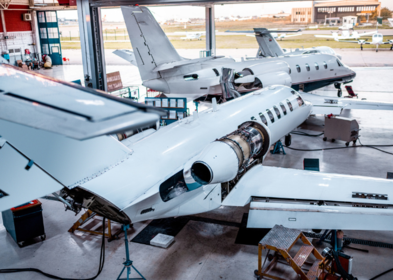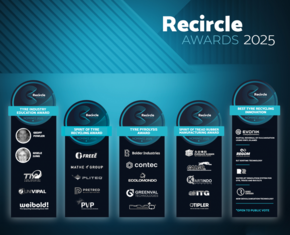
26/02/2024
Giving airplanes a second life? Startup from Singapore takes care of it
Francesca Del Bello
Nandina REM remanufactures materials from the aircraft industry, with important benefits for the automotive industry as well. But it is not the only one involved in the recycling of decommissioned aircraft
An open portal to the future, spread over an area of just 733 square kilometres: this is the case of Singapore, a city-state in Southeast Asia that has chosen to use technology as a 'key driver for the economy and society'. The island has in fact launched a sophisticated strategic digitalisation plan at government level aimed at transforming the city-state into a 'Smart Nation', investing huge amounts of capital in infrastructure, but also - and above all - in technologies serving citizens, businesses, and commercial activities. A nation that has been able to establish itself as a strategic, financial, commercial and logistical hub (its port is one of the most important commercial ports in the world), transforming itself into the most advanced economy in the region, could only become a thriving ecosystem for the development of start-ups, thanks also to a solid network of venture capitalists, multinationals and accelerators.
And it is precisely in this context that Nandina REM was born, a start-up whose aim is to reconfigure the industrial supply chain by promoting the circularity of materials from aircraft and wind turbines, which often have a complex end-of-life management. "Currently, there are more than 8,000 decommissioned aircraft around the world, to which another 15,000 will be added in the next 10 years," explains Carina Kady, CEO of Nandina REM: repurposing these highly engineered materials (these are composite fibres that often represent the most advanced stage of materials engineering) is a challenging process, "but where there is a challenge, there is an opportunity," echoes Jonathan Low, Coordinating Director of Research and Development at A*STAR, a Singaporean government agency that is a strategic partner of the startup. Nandina REM's research and experiments focus mainly on aluminium panels and carbon fibres, materials common to industrial design in both the aviation and automotive sectors, where the start-up aims to reintroduce recovered materials. The aluminium and other alloys extracted from decommissioned aircraft, in particular, can be reused for the production of battery casings for electric vehicles, through a processing procedure that takes about two months (in addition to the 30 days it takes to dismantle the aircraft). "One of the reasons why the casings are so important is that ensuring high-quality secondary materials is a key challenge for the electric vehicle market," Kady further explains in an interview with Bloomberg. "If you take into account all the aircraft that will be retired between now and 2030-2035, you could produce over 50 million casings for electric vehicle batteries" thus avoiding "the construction of about 12 bauxite mines, with a capacity of about 1 million tons per year," Kady concludes. But aluminium panels are not the only material that can be reused in the automotive sector: the very strong and high-quality plastics of aircraft can be used for bumpers or other car components.
Recycling of decommissioned aircraft also interests the European Union: the Compass project, launched as part of the Horizon Europe programme and approved by the European Commission, in fact provides for the allocation of 6 million euros for the development of tools and new technologies that guarantee a second life to the components of aircraft and road transport vehicles, in order to allow the regeneration of 30% of the parts in sheet metal and thermoplastic composite panels. And, considering that the EU itself has been forced to include aluminium in the list of critical materials due to a widespread crisis in the sector, the Compass project seems all the more necessary to tackle the ecological transition and aim at decarbonisation.
And it is precisely in this context that Nandina REM was born, a start-up whose aim is to reconfigure the industrial supply chain by promoting the circularity of materials from aircraft and wind turbines, which often have a complex end-of-life management. "Currently, there are more than 8,000 decommissioned aircraft around the world, to which another 15,000 will be added in the next 10 years," explains Carina Kady, CEO of Nandina REM: repurposing these highly engineered materials (these are composite fibres that often represent the most advanced stage of materials engineering) is a challenging process, "but where there is a challenge, there is an opportunity," echoes Jonathan Low, Coordinating Director of Research and Development at A*STAR, a Singaporean government agency that is a strategic partner of the startup. Nandina REM's research and experiments focus mainly on aluminium panels and carbon fibres, materials common to industrial design in both the aviation and automotive sectors, where the start-up aims to reintroduce recovered materials. The aluminium and other alloys extracted from decommissioned aircraft, in particular, can be reused for the production of battery casings for electric vehicles, through a processing procedure that takes about two months (in addition to the 30 days it takes to dismantle the aircraft). "One of the reasons why the casings are so important is that ensuring high-quality secondary materials is a key challenge for the electric vehicle market," Kady further explains in an interview with Bloomberg. "If you take into account all the aircraft that will be retired between now and 2030-2035, you could produce over 50 million casings for electric vehicle batteries" thus avoiding "the construction of about 12 bauxite mines, with a capacity of about 1 million tons per year," Kady concludes. But aluminium panels are not the only material that can be reused in the automotive sector: the very strong and high-quality plastics of aircraft can be used for bumpers or other car components.
Recycling of decommissioned aircraft also interests the European Union: the Compass project, launched as part of the Horizon Europe programme and approved by the European Commission, in fact provides for the allocation of 6 million euros for the development of tools and new technologies that guarantee a second life to the components of aircraft and road transport vehicles, in order to allow the regeneration of 30% of the parts in sheet metal and thermoplastic composite panels. And, considering that the EU itself has been forced to include aluminium in the list of critical materials due to a widespread crisis in the sector, the Compass project seems all the more necessary to tackle the ecological transition and aim at decarbonisation.






